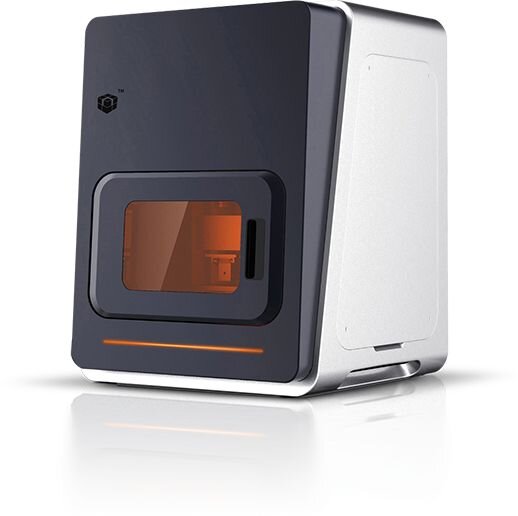![Sample micro-3D print made with the PμSL process [Source: BMF]](https://fabbaloo.com/wp-content/uploads/2020/05/bmf-geo_img_5eb050ab2ac09.jpg)
A new player has emerged on the micro-3D printing stage: Boston Micro Fabrication.
The company, founded in 2016 by MIT professor Dr. Nick Fang, who wished to take his research to the commercial world. He explains:
“Curiosity was one of the primary drivers of this discovery. After realizing that we could print using light, we started to imagine the broader technology and business implications – envisioning how we might break down the barriers that previously prevented manufacturers from taking advantage of 3D printing for the production of microscale parts. At that moment we created the business to explore the possibilities and I am incredibly excited to see what our customers will accomplish using the microArch.”
![Sample micro-3D print made with the PμSL process [Source: BMF]](https://fabbaloo.com/wp-content/uploads/2020/05/image-asset_img_5eb050abc2196.jpg)
The microArch system uses a resin process for 3D printing they call “PμSL”, for “Projection Micro-Stereolithography”. PμSL is able to achieve a resolution of 2μ, or 0.002mm. That’s far smaller than typical 3D printers, which often top out at 0.050mm.
![The microArch 3D printer [Source: BMF]](https://fabbaloo.com/wp-content/uploads/2020/05/image-asset_img_5eb050ac0d897.jpg)
BMF says their process can produce objects in several different materials, including “tough resin, elastic resin, casting resin, high temperature resin and more.”
The interesting part of this announcement is that BMF says production of parts on their equipment is cost-competitive with injection molding at volume. That’s notable because 3D printing is typically more expensive than injection molding, especially at volume. I’m not sure what BMF has done to achieve this capability, but they talk a lot about “short run production”.
![Sample micro-3D print made with the PμSL process [Source: BMF]](https://fabbaloo.com/wp-content/uploads/2020/05/image-asset_img_5eb050ac4104b.jpg)
BMF says their equipment has already been installed in some 40 locations mostly in Asia, and results have been good. It seems this micro-3D printing capability is finding applications in a wide variety of industries, including healthcare and electronics, where tiny parts are often required.
The print quality seen in these images is quite good, and what’s most interesting is that many of the images seem to be taken with an electron microscope: the prints are that small!
![Sample micro-3D print made with the PμSL process [Source: BMF]](https://fabbaloo.com/wp-content/uploads/2020/05/image-asset_img_5eb050ac84159.jpg)
Also note the size of the build plate here. We don’t know the build volume yet, but it’s clear from this image that it’s relatively large and thus many parts could be built in a single job. Perhaps this is part of the reason BMF is able to achieve their low production costs?
There are not many 3D printer companies that can produce extremely tiny objects and certainly few that can do so in a wide variety of materials. It should be interesting to see what kind of applications are developed using this new technology.


3 comments
Comments are closed.